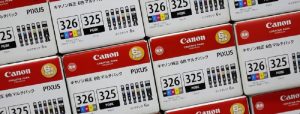Five Tips For Hardware Entrepreneurs: The Ethan Edition
 Ethan Imboden, founder of Jimmyjane, knows a thing or two about hardware startups. He founded one back in 2003, when software was all the rage and hardware was uncool. After toiling on Jimmyjane (which disrupted the sexual wellness industry) for almost ten years, Imboden is adding another position to his bio. “I am happy to contribute to the hardware entrepreneur’s experience based on the bumps and bruises I have taken and help them on their own ground,” he says. To get started, he outlined five tips for hardware entrepreneurs, based on his experience with Jimmyjane.
Ethan Imboden, founder of Jimmyjane, knows a thing or two about hardware startups. He founded one back in 2003, when software was all the rage and hardware was uncool. After toiling on Jimmyjane (which disrupted the sexual wellness industry) for almost ten years, Imboden is adding another position to his bio. “I am happy to contribute to the hardware entrepreneur’s experience based on the bumps and bruises I have taken and help them on their own ground,” he says. To get started, he outlined five tips for hardware entrepreneurs, based on his experience with Jimmyjane.
1. Hardware is not software
“The ecosystem supporting hardware is nowhere near the technology of software,” says Imboden. That difference in ecosystem manifests itself at several levels, according to Imboden. For example, rapid product iteration, which is common in software, is extremely difficult or absent in hardware products. Over the years, Imboden has also noted the knowledge gap between hardware and software at the investor level. While they can segment software products into consumer- or enterprise-focused markets, venture capitalists find it difficult to slot hardware products in a similar fashion, says Imboden. In turn, this becomes a stumbling block for hardware entrepreneurs to convince investors about the value of their product. Similarly, packaging, which is becoming obsolete with software products with the rise of the Internet, is extremely important for hardware.
Then, there is the problem with finding talent. “While investors may know fantastic hackers (from software), they cannot direct you to class A engineers, block testers, or CE certification experts,” he says. Cumulatively, this results in hardware entrepreneurs approaching their startup problems with a software mindset, says Imboden.
2. Build Relationships
It may be hardware but entrepreneurship is really about building relationships, whether it is with your advisors or manufacturers. Imboden, who worked in the design industry for several years before starting Jimmyjane, relied on a personal network. But, he says that gave him a false sense of security.
To plug his deficiencies, Imboden built a “really great team” of directors and advisors for his startup. They helped open doors, establish new connections, and, in some cases, streamline operations and costs for his startup. For example, through Draper Fisher and Jurtvetson, an early investor in Skype and Jimmyjane, Imboden became an early adopter of the communication software. He installed Skype at his manufacturer’s facility in China. This helped in several ways.
When he started manufacturing in China, Imboden flew there every other week. In recent times, he has been able to restrict that flying frequency to between 2-6 times per year. Skype has helped. As has spending long hours working at his manufacturing partner’s facility in China. In turn, Imboden is able to protect his intellectual capital (his manufacturing partner works exclusively with him in the sexual wellness industry) and design custom processes to reduce the ecological footprint for Jimmyjane’s processes and ensure better labor conditions.
3. Go East, Young Man
Jimmyjane manufactured its initial prototype and products in the United States for the first few years. “However, many technical processes and materials were intractable here in the States,” says Imboden. The “intractable” problems ranged from sourcing materials to technical processes. “Those options are absent here as most such processes have shifted overseas,” he says. Imboden’s problems were further compounded by manufacturers in the United States who were unwilling to reconfigure his product at short notice to meet market demands.
According to Imboden, Shenzhen in China is to manufacturing as Silicon Valley is to startups. “Just like Silicon Valley has a critical mass of assets and a creative/productive ecosystem from people to financing structures, Shenzhen has a similar critical mass of product components and manufacturing operations,” he says. That ecosystem proved to be fertile ground for the 42-year-old entrepreneur. “There’s a lot more willingness to consider experimentation in Asia,” he says. Besides achieving economies of scale at lower costs, Imboden is able to reconfigure his product in ways that would not have been possible in the United States.
4. Validate your market
For the first three years of its existence, Jimmyjane manufactured in the States. The startup sourced materials from the Bay Area, did not invest in tooling, and manufactured products locally. Not surprisingly, margins on their final products were low.
However, Imboden clarifies that margins were not really the point. “We wanted to test really heavily whether the industry (and market) was ready for the radical change we were proposing,” he says.
In modern times, hardware entrepreneurs have taken the crowdfunding route to test their products. In this case, backers help establish the Minimum Order Quantity or MoQ for final products. This can be an especially helpful datapoint to decide whether to manufacture in the States or China. This is because, typically, Chinese manufacturers work on high volume and low mix models and a minimum order quantity that is between a thousand and ten thousand.
Imboden shifted manufacturing to China after three years of operations here. “We did not even get to the costing part here in the States,” he says. But, he adds that they had a sizeable sales line before they shifted their manufacturing operations. As a result, MoQ with Chinese contract manufacturers was never a problem for them.
Read more: Five Tips For Hardware Entrepreneurs: The Ethan Edition







